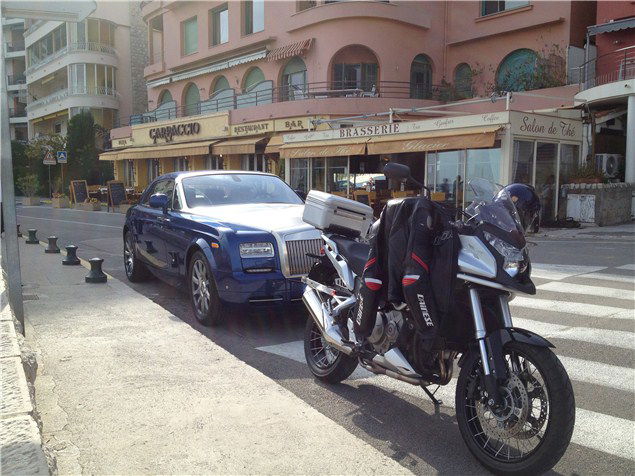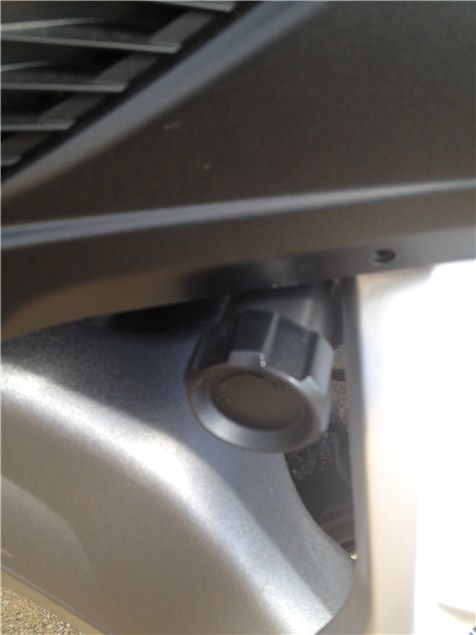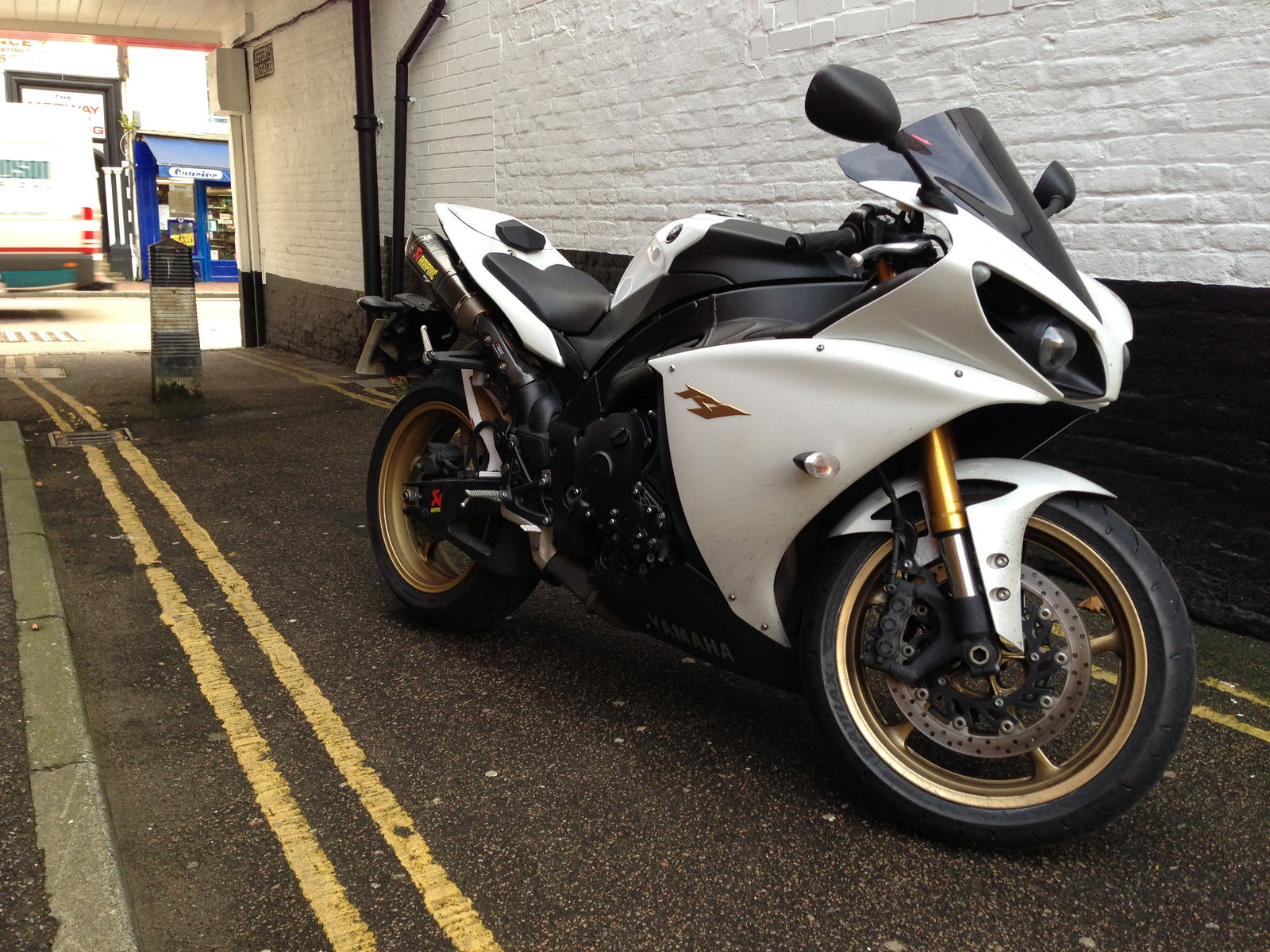Honda Crosstourer - 2k miles in 7 days...
...and I still like it
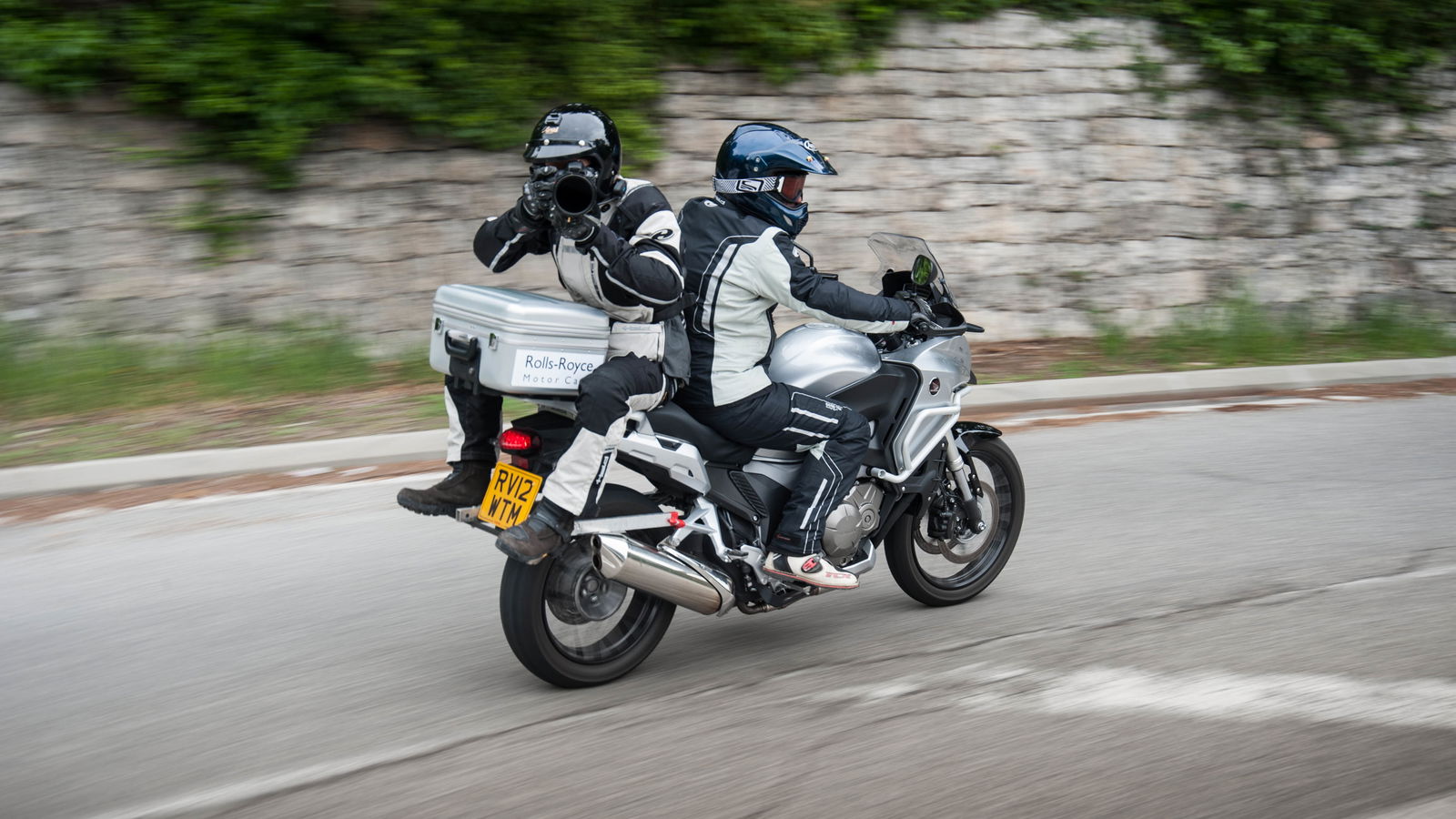
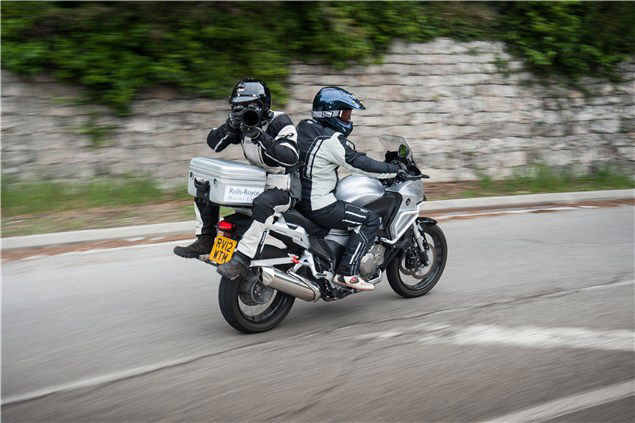
Just got back from a mad two-week Honda Crosstourer assault on the Côte d'Azur.
We managed to clock up over two thousand miles in seven days riding – all two-up with the pillion spending most of his time facing backwards. Like you do.
We were using the bike to shoot the new Rolls Royce Phantom 2 launch, held in swanky Monte Carlo but using road routes that took in the fabulous Route Napoleon and some of the finest tarmac around Grasse and Vence. It struck me that this might be an ideal opportunity for the ultimate road test for a bike designed to cover big miles at high speeds, two-up.
For previous photo shoots we’ve used a Triumph Bonneville and a BMW GS Adventure. The Bonneville was good (small, nimble, manageable) but spoiled by crude short-travel suspension which made it hard for the photographer to avoid camera shake. Well, that was his excuse, anyway.
The GS Adventure was near-perfect with flexible, punchy, low-down power and a massive top-box to store all the camera gear in but its multi-storey seat height was just a bit too much for our short, fat hairy legs. If you’re a giant, the Adventure is a fantastic bike. If you’re a bit of a dwaff, like myself, it can be pretty unwieldy, especially at low speeds.
The Crosstourer looked like a good bet. It impressed me on the launch a couple of months ago. Yes it was heavy but the tweaks that Honda have made to this VFR1200 motor to gain more low down torque made it a blast to ride. The seat height was sensible, as well.
We fashioned some makeshift rear footrests for it and the job was done.
At 265kgs the Crosstourer is certainly no lightweight. Add a passenger, a load of camera gear and luggage, a full tank of fuel and, of course, yourself and that figure begins to get closer to half a tonne. 465kgs, to be precise. That’s quite a lot of responsibility, especially when your squirming passenger is facing the wrong way and sometimes standing on the pillion pegs.
But, in its defence, the Crosstourer doesn’t feel heavy when it’s moving at anything more than walking pace. The bike’s centre of gravity is noticeably lower than BMW’s GS and this makes chucking it around much, much easier. It is, altogether, much more manageable than the GS,
Stability is a big plus point too. Even loaded up to the guns and near flat out in top gear, she tracks straight and true, even with a slightly squared off back tyre. If you can make a Crosstourer tankslap or weave, you’re a better man than me.
But for this job, riding fast and smooth, I don’t think we could have picked a better bike. The fly-by-wire throttle and monumental low down torque delivery makes rapid progress effortless and fuss-free. Every time I turned the ignition on I found myself turning the traction control off. It’s not because I’m an old school techno-luddite, merely that when the TC kicks in (if the front wheel leaves the tarmac by .2mm, for instance) the system just takes too long to hitch its knickers back up and get going again. Annoying.
Tank range? There was much huffing and puffing about the VFR1200s range – misplaced, I thought – but the 21.5 litre tank on the CT allowed us to cover between 130 and 180 miles in one stint depending on how much I was beasting the throttle. Personally, bearing in mind the weight we were lugging, I don’t think that’s too bad.
My pillion, snapper James Lipman, commented that the pillion pegs (the standard ones not our cobbled-together system) were a few inches too high which throws your weight onto your coccyx. No such problems for the rider. The riding position is roomy, the seat soft and supportive and the fairing does and excellent job of shielding you from the wind blast and rain.
I said on the launch of the Crosstourer that the DCT version was the better bike (in my opinion) and having ridden this manual version for a couple of thousand miles, I’m sticking to that comment. The manual six-speed gearbox (and drivetrain in general) is not this engine’s finest hour. First engages with a massive ‘CLONK’ and I found myself riding the clutch nearly all day just to smooth out the transmission backlash at on-off-on-off throttle applications. At the end of each day my left hand felt like it’d been run over by a truck – the clutch is not the lightest in the business.
There’s a yawning chasm between first and second gear and I found myself at nearly every hairpin wanting a gear between the two with first way too low and second just annoyingly too high. Admittedly this would also be an issue on the DCT version which runs identical ratios. On motorways and fast roads, though, sixth gear is a really useful overdrive, keeping the revs nice and low. It’ll cruise all day at 100mph if your bank balance can stand the fines. Oh, and on that note, it is possible to get caught speeding at Peage stations on elapsed time. I always thought that was a myth. Let me tell you, categorically, it isn’t.
Pillion or solo, it’s very easy to dial in the rear spring preload to compensate. There’s a knurled hand wheel that, with practice, you can actually adjust on the move. For fast two up work we found that four clicks out from full was just about ideal. How the bike came as standard was too soft for what we were doing and it made the steering very light and imprecise. Winding on some rear spring preload shifted the weight balance and not only improved the steering but also the way it rode bumps two-up.
Linked brakes, I have to admit, were never my favourite invention. I’ve spent too long believing that my two right finger were for the front brake and my right toes for the back. But, you know what? When you’re carrying a passenger (especially one facing the wrong way), it’s actually a better system for keeping the bike level. Just a stroke of the back brake lever on corner entry scrubs off speed without the bike pitching onto its nose, leaving your right hand to concentrate solely on picking up the speed again as the turn opens out. I really got used to the linked brakes and really grew to like them.
Did I really just say that?
Grumbles? The standard Honda luggage is plasticky and flimsy and the fact that you need the ignition key to open and close the top box and panniers is a bit of a pest when you want to access stuff on the move or when the bloke with the key isn’t around. The digital dash is quite hard to see in bright sunlight, too.
But the grumbles pale into insignificance when you wind the taps open. The heart of this bike is that fabulous V-4 1200cc motor. With its smaller header pipes and narrower inlet trumpets (than VFR1200) it’s the torque from tickover that really impresses. With a soulful, gruff engine note and monumental shove the moment you twist the throttle, the Crosstourer is a phenomenal bike to ride all day, every day.
Dial in rock-steady handling and supreme rider comfort and you’ve got a proper cross-continent blaster that is as much fun on motorways as it is carving through mountain passes.
But French motorways are somewhere I will certainly avoid in the future…


